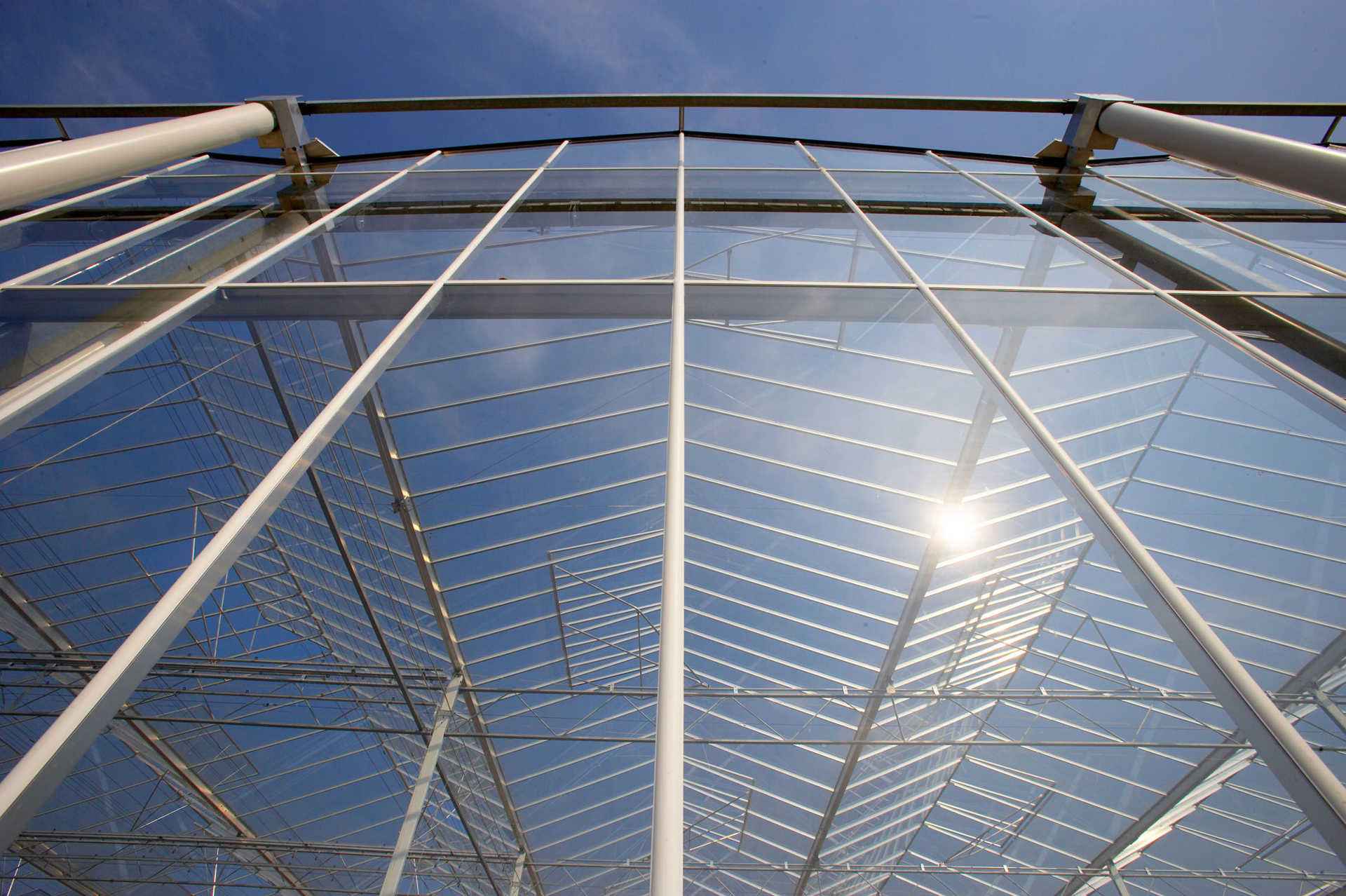Short definition
Relative Humidity (RH) is the percent ratio of the actual water vapor in greenhouse air to the maximum it can hold at the current air temperature; it guides condensation risk, disease suppression, and climate control decisions.
Expanded definition
Relative Humidity is a temperature-dependent measure that compares the actual water vapor content of greenhouse air to the saturation capacity at that same temperature, expressed as a percentage. It is read directly from RH sensors, wet/dry bulb methods, or psychrometric calculations, and used alongside temperature to infer dew point and calculate vapor pressure deficit (VPD, kPa). Because the same absolute humidity can produce very different RH at different temperatures, RH alone cannot show whether moisture is accumulating or being removed; absolute humidity (g/kg or g/m³) and its trend are required for moisture balance. In practice, growers use RH to inform ventilation, heating, humidification, evaporative cooling, and disease risk management. Synonyms and abbreviations: RH, relative moisture, percent saturation, percent relative humidity, saturation percentage.
In Greenhouse Context
RH matters operationally because it ties air temperature, moisture, and plant processes into a single, actionable indicator for climate control. When RH rises toward saturation, the dew point advances toward the actual air temperature; if cover, glazing, or plant surfaces fall to or below the dew point, condensation forms. In greenhouses this leads to dripping, wet leaf surfaces, and elevated disease pressure. Managers therefore integrate RH with temperature to schedule heating pulses, ventilation, and air distribution so the cover temperature does not approach the dew point. RH also affects how much evaporative cooling or fogging can be applied without creating persistent surface wetness: high RH limits evaporative capacity, while low RH enables stronger cooling but can increase transpiration demand on crops. Because RH depends on temperature, a nighttime cool-down can cause RH to spike even if no additional moisture is added; the same absolute humidity at a lower temperature yields higher RH. This is why many growers track absolute humidity (g/kg or g/m³) and VPD (kPa) in parallel with RH to distinguish between a real moisture surplus and a temperature-driven RH increase. Sensor choice and placement are critical: electronic capacitive RH sensors should be shielded from direct radiation and located in representative crop zones to avoid falsely low readings near warm heaters or falsely high readings in stagnant corners. Regular calibration checks and filtering of short-term spikes help prevent overreactions by the climate controller. In control logic, RH setpoints are often combined with temperature ramps, minimum ventilation rates, and horizontal airflow to mix microclimates. Psychrometric charts and software are used to validate how a proposed action—such as cracking vents, running pad-and-fan systems, or adding heat—will move the greenhouse state point and change RH, dew point, and VPD, ensuring that disease risks are reduced without wasting energy or stressing plants.
Examples and/or use cases
A tomato house approaches sunset with warm air and moderate absolute humidity; as the heating setback lowers temperature, RH rises quickly and the controller adds a small heat-and-vent cycle to keep the cover temperature above the dew point and prevent condensation on trusses; A young leafy greens crop under shade in humid weather shows RH near 90% after a short misting event; the grower delays further mist and increases horizontal airflow to shorten leaf wetness duration and reduce foliar disease risk; A pad-and-fan-cooled greenhouse in a dry afternoon has low RH and high VPD; the manager increases pad flow to drop temperature and RH together, improving comfort for workers while maintaining target VPD for transpiration; On a cold morning, RH spikes when vents close; the control system slightly increases pipe heat and opens leeward vents to remove moisture on an absolute humidity basis, lowering RH without overcooling the crop; During propagation, a faulty RH sensor drifts low, causing over-humidification; comparison with a sling psychrometer and a second calibrated sensor reveals the error, and the setpoint is restored to maintain high but controlled RH; A grower troubleshoots localized botrytis by logging RH at canopy and near the roof, then adjusts airflow and screens to reduce stratification so RH no longer peaks at the crop surface overnight.
Relevance
Relative Humidity is central to greenhouse psychrometrics, where temperature, moisture content, and energy are mapped to predict how control actions will change plant and structural wetness risks. Climate algorithms frequently use RH thresholds to trigger heating,
dehumidification by ventilation, and to constrain fogging or pad-and-fan operation. While RH is familiar and intuitive for operators, it must be interpreted with dew point, absolute humidity (g/kg or g/m³), and VPD (kPa) to avoid misdiagnosis: the same RH at different temperatures can imply very different transpiration rates and condensation risk. RH influences plant physiology indirectly through VPD, shaping stomatal conductance, nutrient transport, and evaporative cooling; too low RH can overdrive transpiration, while too high RH can suppress transpiration and prolong leaf wetness. In practice, maintaining RH within crop-appropriate bounds reduces foliar disease pressure, improves product quality, and conserves energy by minimizing unnecessary heating or overventilation. Sources — Online: https://extension.psu.edu/psychrometric-chart-use/; https://msu-prod.dotcmscloud.com/floriculture/uploads/files/Section%20_3.pdf; https://ceac.arizona.edu/sites/default/files/asae_-_heating_ventilating_and_cooling_greenhouses.pdf; https://pdhonline.com/courses/m135/m135content.pdf.
